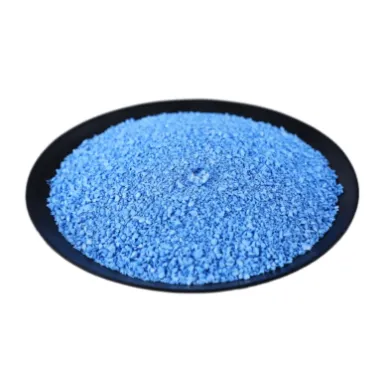coolroof@cnchida.com
+86 13803333363
 Afrikaans
Afrikaans
 Albanian
Albanian
 Amharic
Amharic
 Arabic
Arabic
 Armenian
Armenian
 Azerbaijani
Azerbaijani
 Basque
Basque
 Belarusian
Belarusian
 Bengali
Bengali
 Bosnian
Bosnian
 Bulgarian
Bulgarian
 Catalan
Catalan
 Cebuano
Cebuano
 Corsican
Corsican
 Croatian
Croatian
 Czech
Czech
 Danish
Danish
 Dutch
Dutch
 English
English
 Esperanto
Esperanto
 Estonian
Estonian
 Finnish
Finnish
 French
French
 Frisian
Frisian
 Galician
Galician
 Georgian
Georgian
 German
German
 Greek
Greek
 Gujarati
Gujarati
 Haitian Creole
Haitian Creole
 hausa
hausa
 hawaiian
hawaiian
 Hebrew
Hebrew
 Hindi
Hindi
 Miao
Miao
 Hungarian
Hungarian
 Icelandic
Icelandic
 igbo
igbo
 Indonesian
Indonesian
 irish
irish
 Italian
Italian
 Japanese
Japanese
 Javanese
Javanese
 Kannada
Kannada
 kazakh
kazakh
 Khmer
Khmer
 Rwandese
Rwandese
 Korean
Korean
 Kurdish
Kurdish
 Kyrgyz
Kyrgyz
 Lao
Lao
 Latin
Latin
 Latvian
Latvian
 Lithuanian
Lithuanian
 Luxembourgish
Luxembourgish
 Macedonian
Macedonian
 Malgashi
Malgashi
 Malay
Malay
 Malayalam
Malayalam
 Maltese
Maltese
 Maori
Maori
 Marathi
Marathi
 Mongolian
Mongolian
 Myanmar
Myanmar
 Nepali
Nepali
 Norwegian
Norwegian
 Norwegian
Norwegian
 Occitan
Occitan
 Pashto
Pashto
 Persian
Persian
 Polish
Polish
 Portuguese
Portuguese
 Punjabi
Punjabi
 Romanian
Romanian
 Russian
Russian
 Samoan
Samoan
 Scottish Gaelic
Scottish Gaelic
 Serbian
Serbian
 Sesotho
Sesotho
 Shona
Shona
 Sindhi
Sindhi
 Sinhala
Sinhala
 Slovak
Slovak
 Slovenian
Slovenian
 Somali
Somali
 Spanish
Spanish
 Sundanese
Sundanese
 Swahili
Swahili
 Swedish
Swedish
 Tagalog
Tagalog
 Tajik
Tajik
 Tamil
Tamil
 Tatar
Tatar
 Telugu
Telugu
 Thai
Thai
 Turkish
Turkish
 Turkmen
Turkmen
 Ukrainian
Ukrainian
 Urdu
Urdu
 Uighur
Uighur
 Uzbek
Uzbek
 Vietnamese
Vietnamese
 Welsh
Welsh
 Bantu
Bantu
 Yiddish
Yiddish
 Yoruba
Yoruba
 Zulu
Zulu

Úno . 13, 2025 02:46 Back to list
roofing granule
Rolled roofing is an economical and straightforward solution often chosen for low-slope roofs. Understanding its lifespan and factors that influence it can help you make informed decisions about its use and maintenance. Typically, rolled roofing can last between 5 to 15 years, depending on various factors. Here's a deep dive into what affects its longevity, ensuring you choose and maintain the best product for your needs.
Climate and environmental exposure will inevitably affect rolled roofing's durability. In regions prone to intense sunlight, UV rays can accelerate the degradation of roofing materials. Similarly, areas with extreme temperatures—either very hot or very cold—can cause expansion and contraction, leading to material fatigue over time. Meanwhile, excessive rain or high humidity can increase the risk of moisture infiltration, resulting in rot or mold development beneath the roofing. Thus, the local climate must be considered when purchasing and installing rolled roofing. Regular maintenance is essential to maximize the lifespan of rolled roofing. This involves periodic inspections for damage, prompt repairs of any identified issues, and ensuring the roofing remains clear of debris that might cause water retention. Regular maintenance routines should include checking seams for integrity, especially after severe weather events. Addressing minor issues quickly can prevent them from escalating into major problems that could severely shorten the roof's lifespan. In conclusion, while rolled roofing may not last as long as more expensive roofing options, understanding and applying best practices can help optimize its durability. Prioritize quality materials, ensure professional installation, consider your local climate when choosing a product, and maintain a regular inspection and maintenance schedule. By doing so, rolled roofing can serve as a reliable, cost-effective roofing solution for as long as possible, fulfilling its role as an affordable alternative without frequently requiring replacement.


Climate and environmental exposure will inevitably affect rolled roofing's durability. In regions prone to intense sunlight, UV rays can accelerate the degradation of roofing materials. Similarly, areas with extreme temperatures—either very hot or very cold—can cause expansion and contraction, leading to material fatigue over time. Meanwhile, excessive rain or high humidity can increase the risk of moisture infiltration, resulting in rot or mold development beneath the roofing. Thus, the local climate must be considered when purchasing and installing rolled roofing. Regular maintenance is essential to maximize the lifespan of rolled roofing. This involves periodic inspections for damage, prompt repairs of any identified issues, and ensuring the roofing remains clear of debris that might cause water retention. Regular maintenance routines should include checking seams for integrity, especially after severe weather events. Addressing minor issues quickly can prevent them from escalating into major problems that could severely shorten the roof's lifespan. In conclusion, while rolled roofing may not last as long as more expensive roofing options, understanding and applying best practices can help optimize its durability. Prioritize quality materials, ensure professional installation, consider your local climate when choosing a product, and maintain a regular inspection and maintenance schedule. By doing so, rolled roofing can serve as a reliable, cost-effective roofing solution for as long as possible, fulfilling its role as an affordable alternative without frequently requiring replacement.
Previous:
Latest news
-
Types of Roof Shingles: Durable Styles & Materials
NewsAug.04,2025
-
Different 3 Tab Shingles Types | Affordable & Durable Roofing
NewsAug.03,2025
-
Moonlight White HIREFLE Granules with GPT-4 Turbo
NewsAug.02,2025
-
Premium Round Asphalt Shingles: Durable & Elegant Roofing
NewsAug.01,2025
-
Eco-Friendly Clay Tiles | AI-Enhanced Durability
NewsJul.31,2025
-
Durable Shingle Granules for Premium Roofs
NewsJul.31,2025
Related Products
Copyright © 2025 Hebei Chida Manufacture and Trade Co., Ltd. All Rights Reserved. Sitemap | Privacy Policy







